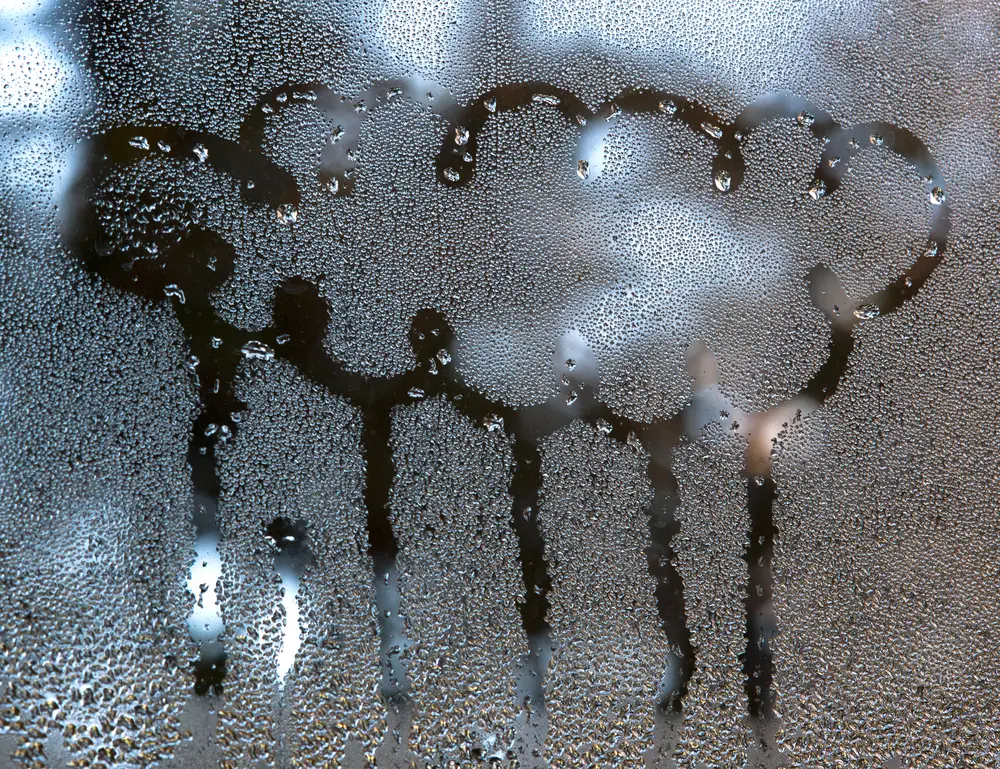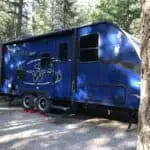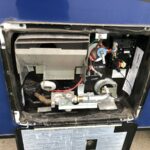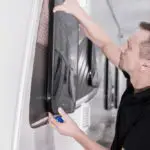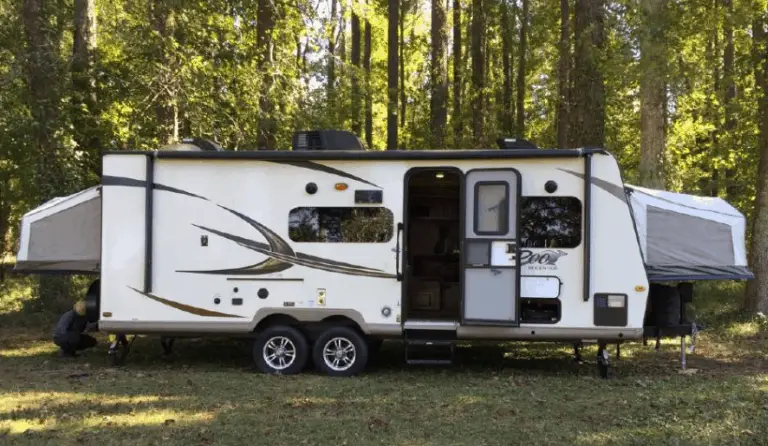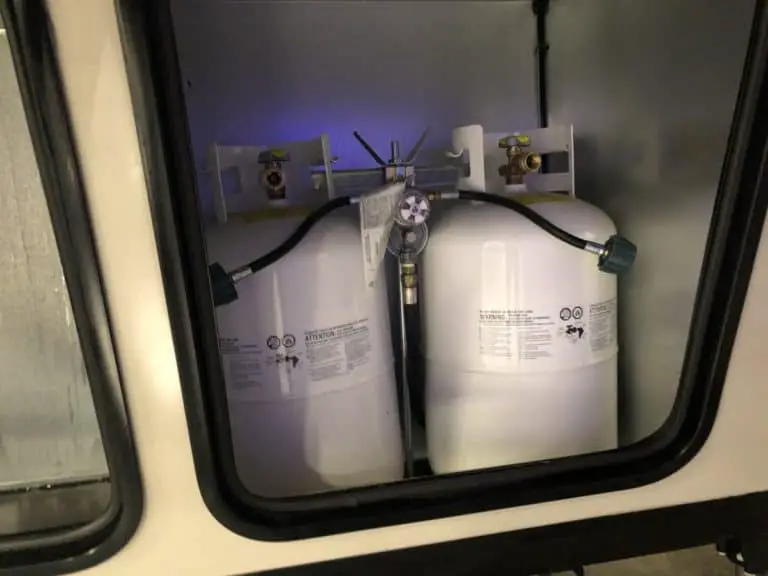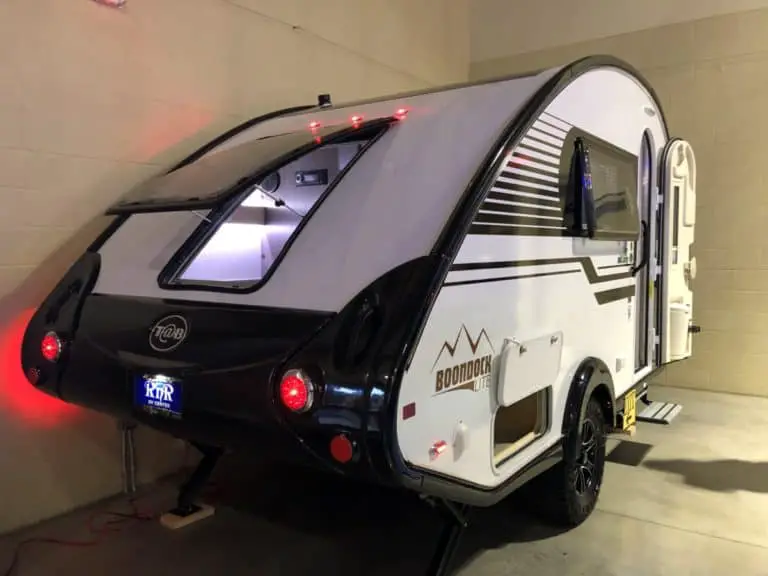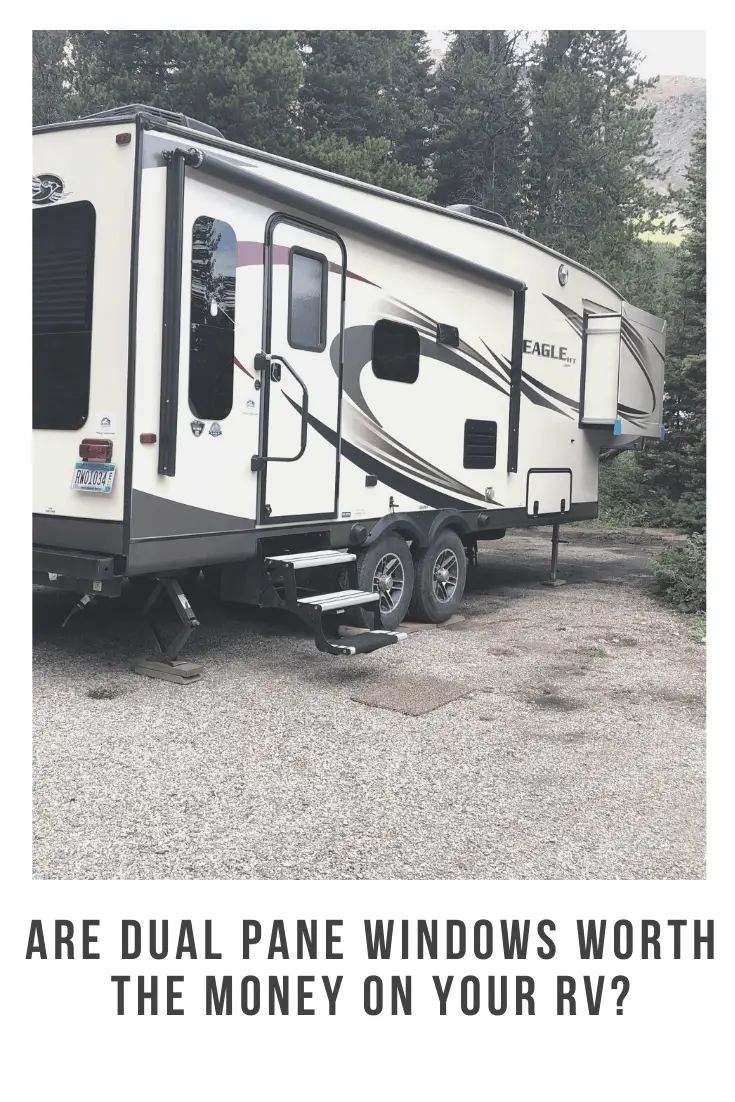How to Keep RV Windows from Sweating – Plus 12 Tips for Moisture Control
Condensation forming on the inside of your RV’s windows can be not only annoying but harmful. This may make it hard to see outside the window and can take some time to clean up. How are you meant to keep your RV windows from sweating in the first place?
To keep RV windows from sweating, you need to keep the level of humidity to a minimum. Humidity, once it touches the window, will turn into condensation and will make the windows look like they are sweating. This can cause mold and other issues if not treated.
Let’s take a closer look at some of the reasons why your windows are sweating and some of the top tips you can use to control moisture in your RV to prevent this issue from happening.
How to Keep RV Window from Sweating
The most common reason why RV windows sweat is that there is an excess of water vapor from humidity inside of the RV. This humidity may touch the windows of the RV, which are cooler than the air, and that turns it into condensation. This is why you will see the condensation, or sweat, on the windows.
There are different ways that humidity will be able to get into your RV and cause some problems like:
- Taking a hot shower
- Cooking inside
- Letting clothing items dry inside
- Sealing up the trailer and being in it while it is cold or raining out.
The best way to prevent this is to find ways to keep the levels of water vapor down. If you can take a shower in one of the shower houses or keep the heat down inside the RV, or consider cooking outside, you will find that sweaty RV windows is not a big issue any longer.
The Problem with Sweaty Windows
Many times, it may seem like sweaty windows in the travel trailer is not a big deal. After a little bit of ventilation, you will find that the windows can clear up and it seems like no harm has been done.
When the condensation is not removed from the windows, it can cause a number of problems including:
- Water getting stuck between the two panes
- Mold and mildew growth
- Rotting of wood or other material it sits on top of
Both of these can cause a number of issues, including mold to grow if you do not clean out the moisture and keep it to a minimum. Since mold can cause a number of health concerns and it is hard to clean out of the windows. Keep the humidity to a minimum to avoid this problem.
How Does Humidity Cause Sweaty Windows?
The main reason that you see your windows sweat is that there is a lot of humidity inside of the camper. When that humidity, which is often in the form of water vapor, starts to hit something cool, like a window, it will create condensation that looks like sweat.
Even when it is hot outside, the window may still be cooler than the relative humidity that is inside the camper. This is why it is such a good idea to keep the water vapor down as much as possible during the summer, using some of the tips we discussed before.
Some of the ways you can deal with this humidity include:
- Keep showers to a minimum
- Open the windows so the humidity can’t touch the windows
- Use fans and vents
- Choose the right time of year to go camping
- Install a dehumidifier
It is a good idea to limit humidity as much as possible inside the camper. While it may not seem like a big deal, the more moist air that is in the RV and the longer it stays there, the harder it can be on all the components of your RV. Keeping it to a minimum and removing it as quickly as possible with vents, fans, and dehumidifier, the longer the RV will last.
Will the Cold Weather Make My Windows Sweat?
It is possible that cold weather may be a cause of the windows sweating too. When the air warms, it will start to expand to hold onto more moisture. Then it is able to cool down, which causes it to contract until it reaches a saturation point. During that time, excess water is released as condensation.
Some of the common activities that you do in your home during the winter, including:
- Showering
- Cooking
- Using gas heat that is unvented
- Breathing
All of these things can add more moisture to the air. When all that warm and humid air is able to touch the cold glass of the window, it will cool down before condensing. This appears as sweat inside of the window.
You will need to use some of the steps below in the winter to make sure the windows do not sweat. This is an even bigger problem because of the temperature difference in the winter compared to the summer so use some extra caution.
How Does Moisture Get Into the RV?
There are different ways that moisture can find its way into your RV. However, three main causes should be the first thing you look for:
- Cooking: This can release steam in the air.
- Showering: When the mirrors fog up after a shower, this is moisture in the air that can make the windows sweat.
- Your breathing: If it is hot and you are breathing, you could make the windows sweat.
These are some of the ways that moisture from the inside could make the RV windows sweaty. You need to be careful with the amount of moisture that you release inside the RV or you could end up with some issues along the way with sweaty windows.
How to Provide Moisture Control for RV Windows
The best way to make sure that your RV windows are not going to sweat and get damaged is to find ways to reduce the moisture level within the camper. There are different tips you can use to make this happen including:
1. Use Ventilation
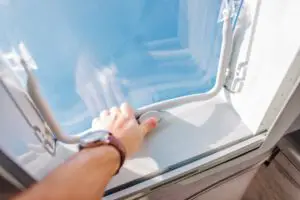
Many RVs have a vent fan that is present in several spaces throughout the recreational vehicle. These are meant to help keep the moisture out of the RV and to prevent sweating. You should be able to find these vents:
- Above the stove
- In the bathroom (generally a roof vent)
- One or two roof vents in the main living area based on the size of the RV
Using these vents when it starts to get humid in the RV and keeping the windows open during the day can allow the air inside and clears up a lot of the humidity and moisture that likes to get into the RV. Our favorite vent fan is this model which we have reviewed here.
If a condensation problem continues even when using ventilation it may be time to consider upgrading to proper ventilation to achieve a sweat-free trailer. We upgraded our fans about a year ago and it has helped in so many ways, but especially with keeping condensation at bay. Here is a great option for the bathroom fan, and this is our favorite upgraded fan for the main living space.
2. Keep Showers to a Minimum
Hot showers may feel good, but they will lead to sweaty windows if you take them too hot for too long. If you notice the windows are sweating when you are done with a shower, consider:
- Turning down the temperature a little.
- Taking shorter showers
- Taking fewer showers
You may notice that your RV is much more comfortable too if you can turn down the heat on the showers and not have as high of humidity level in the vehicle. You may also want to use the available bathhouses when possible to keep the humidity down.
3. Plan Ahead When Cooking
You will need to cook at some point when you are using the RV unless you plan to eat out all the time. The steam from cooking and the heat from the oven may be causing some of the issues you have with sweaty windows. A few things to consider when cooking in the RV include:
- Open the windows if the weather is nice enough. This can vent some of the heat out.
- Use some of your ventilation. This can wick the steam out.
- Cook outside: When possible, consider cooking outside.
- Use lower temperatures when possible.
Depending on how long you decide to cook and the temperature of the items you plan to work with, you will likely have some excess moisture get on the windows anyway. Be careful with this to keep things comfortable.
4. Wipe Down the Windows
When you start to see a level of condensation on the windows of the RV, you can bring out a dry towel and wipe the window down. Try to do this before the droplets get a chance to settle and create pools of water on the window. You will need to repeat this and then hang the towel outside to dry.
5. Open the Cabinet Doors
Any time there is water vapor in the RV, it is going to get stuck in any space that is enclosed, including in your closets and cabinets. This could cause a lot of problems that you will not know about until a lot of damage is already done. To help solve this:
- Open up the cabinet doors when you will not be inside for a bit
- Open up the closet doors as well
This will help to ventilate the space and can let all of that hot and moist air out of those confined spaces, reducing the amount of humidity that is present and allowing those areas to get cleared out before more damage occurs.
6. Soak it All Up
It is also possible to soak up some of the humidity that is inside the camper. You will find that there are many products on the market that can do this work for you, though this product is a great one to use in an RV.
This product will provide moisture control in the RV, taking in any moisture that it comes in contact with. To use, just add to your bathroom, closets, and cabinets and let it get to work.
7. Insulate the Walls
It is possible to provide some insulation for the walls to help keep the humidity down and limit the amount of contact it has with the cooler air outside. Many do not think about insulating the walls of their RV, but it can be a great way to keep everything protected.
When you decide that insulating the walls is a good idea, then it is time to get to work. Choose a good material to help with this. Some of the options that you can make include:
- Carpeting: It is not uncommon to see some carpeting on the walls to keep it cool.
- Vinyl: This can add a little bit of decorative stance to the wall
- Fabric
If this is something that you are serious about doing in your RV, then you may want to talk to a professional to get it all done. They can discuss a few of their ideas with you to help you make decisions that keep the RV protected while also making it look nice.
8. Get a Dehumidifier
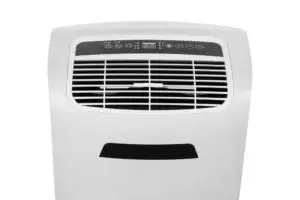
Sometimes it will get hot in the RV, no matter what you try to do to prevent it. This means it is time to put the big guns to work and find ways to remove the moisture out of the RV. This is where a dehumidifier can help.
A dehumidifier works well to keep condensation off the windows and the walls of your RV. It can take all of the moisture out of the air, which will work wonders at eliminating window condensation. When using a dehumidifier:
- Plug it in
- Place it closest to the area where the humidity is present
- Let it run
- Empty out the collection container when full
This machine can be kept on all the time if you wish or you can just turn it on when you notice it is getting humid inside of the RV. You will quickly notice the difference that it makes. Here is a small energy-efficient dehumidifier that we recommend.
9. Pick the Right Camping Season
Sometimes it is just a matter of picking the right season to camp in before you worry about the windows. Most campers choose to avoid the winter months because it is colder and they have to worry about frozen pipes and other issues.
If you would like to avoid excessive moisture on the windows though, there are two types of climates that are perfect for this:
- The winter or early fall
- Warmer and drier climates
Both of these will have climates that will not see a big temperature difference or a lot of moisture, so you do not need to worry about the extra condensation that gets onto the windows during the hot and humid summer months.
While camping, consider installing a plastic film on the RV windows. This is a simple process to do and allows your windows to have a double pane without having to spend for a new window. The benefit of using this film includes:
- Provides an air blanket that keeps the warm air from contacting a cool window
- May provide shade and protection if you choose the right one
You can contact the manufacturer of the RV to see which type of sealant they recommend to help with this. There are often several on the market that you can choose to use as well if you like this idea.
10. Open a Window
If you have opening vents on the windows and it is not too hot, you may want to get the windows open to let out some of the moisture buildup. The cool breeze will feel amazing and can kick out some of the heat that is inside your vehicle.
11. Do Not Hang Things Inside to Dry
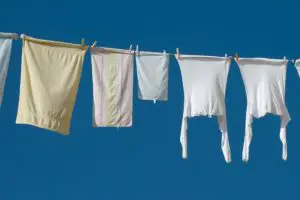
If your goal is to remove moisture out of the air, you do not want to make this harder by finding things to add to the humidity. If you are doing laundry or have a bunch of towels and swimsuits that need to dry after swimming, do not let them hang out in the RV. Some other options include:
- Use a dryer to get wet items dry if that is an option.
- Hang clothes outside to dry when possible.
You can bring the clothes and other items back into the RV when you are certain they are dry. This can give you the dry items you need without the RV windows getting sweaty.
12. Cover the Windows
Most of the condensation that you will find on the RV is going to be found through the windows. This can often happen when the windows get cold through the chilly air. One of the best ways to help with this issue is to get a special film to insulate the windows.
There are different products that you can use for this and it will take a little time to find the one that is right for your windows. Look at the make and model of your RV to help make this a little easier.
Keeping Your Windows Safe from Moisture
While a little bit of moisture on your windows is not a big deal to work with, you do need to be careful about this. Too much moisture can get stuck in the components of the windows and may make them the perfect place for mold and other problems as well.
By following some of the tips above and preventing moisture as much as possible inside the RV and out, you will be able to prevent the windows from sweating and getting ruined in the process. Happy camping!
Be the first to be notified about FREE tips, hints, coupon codes, and email-exclusive information. All for FREE!

